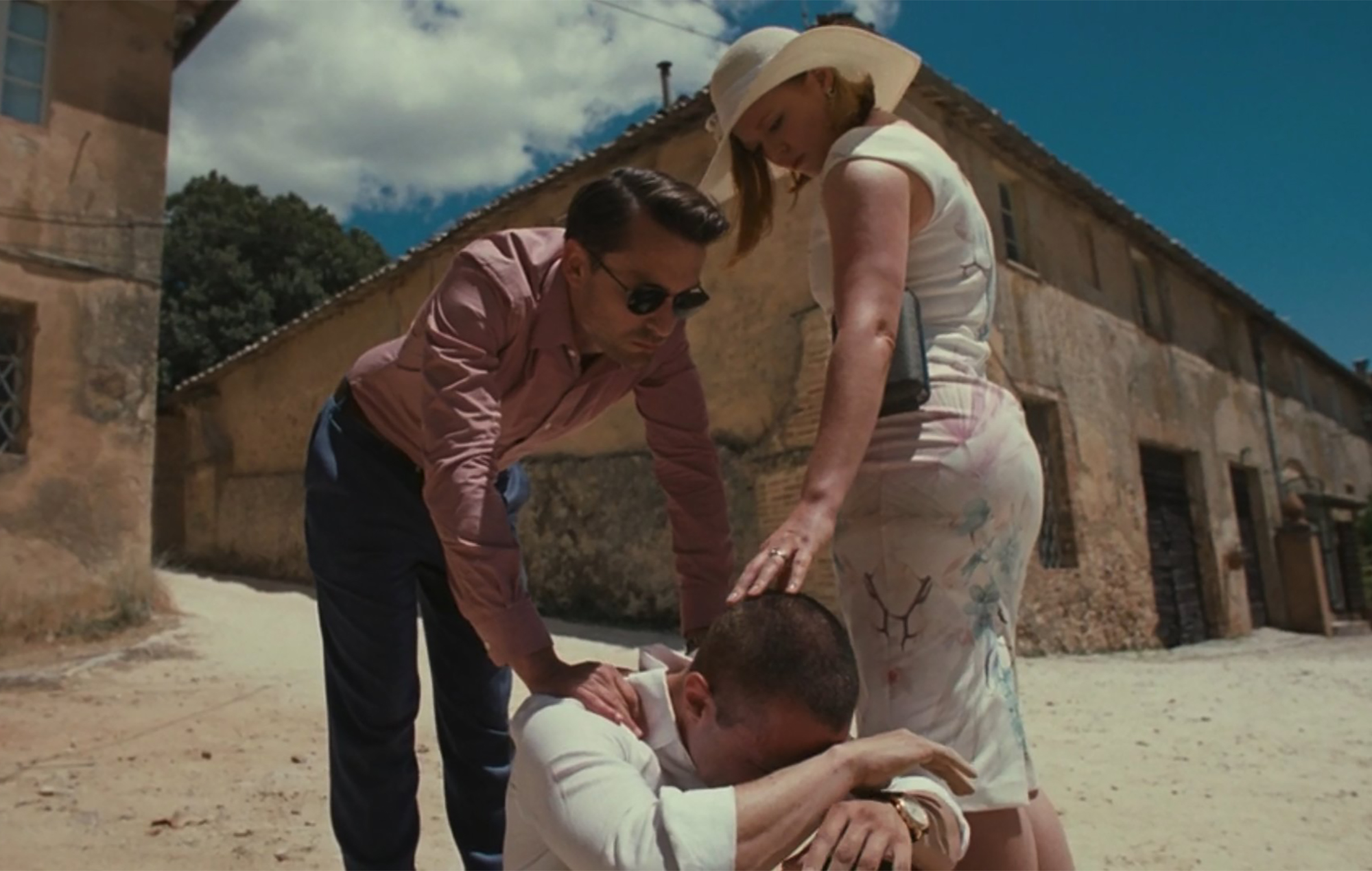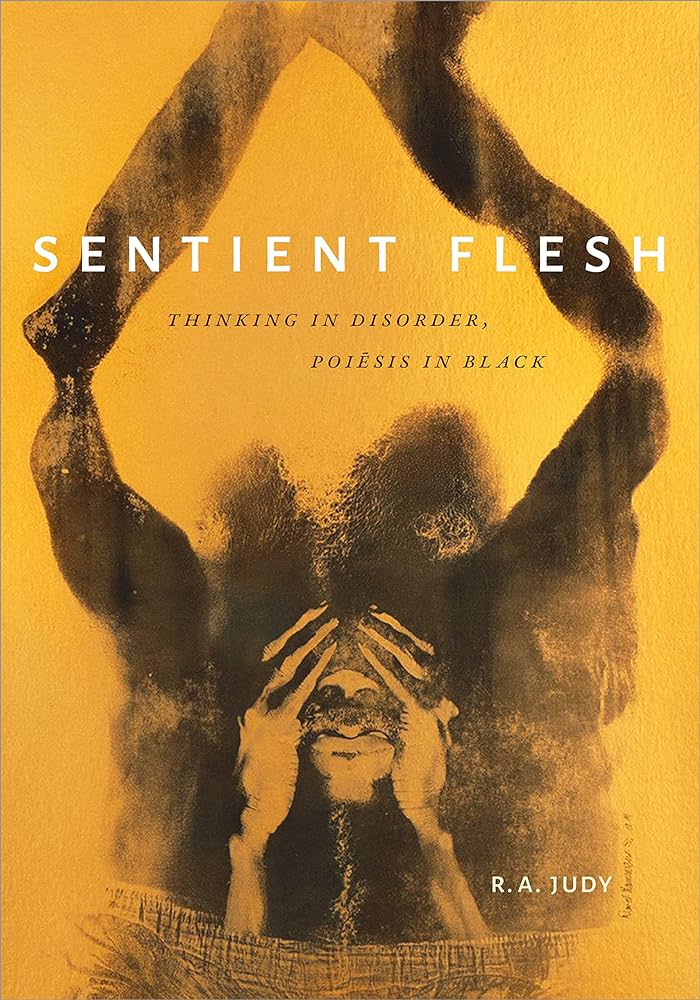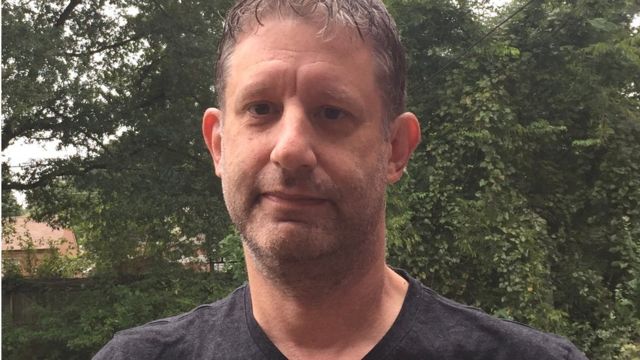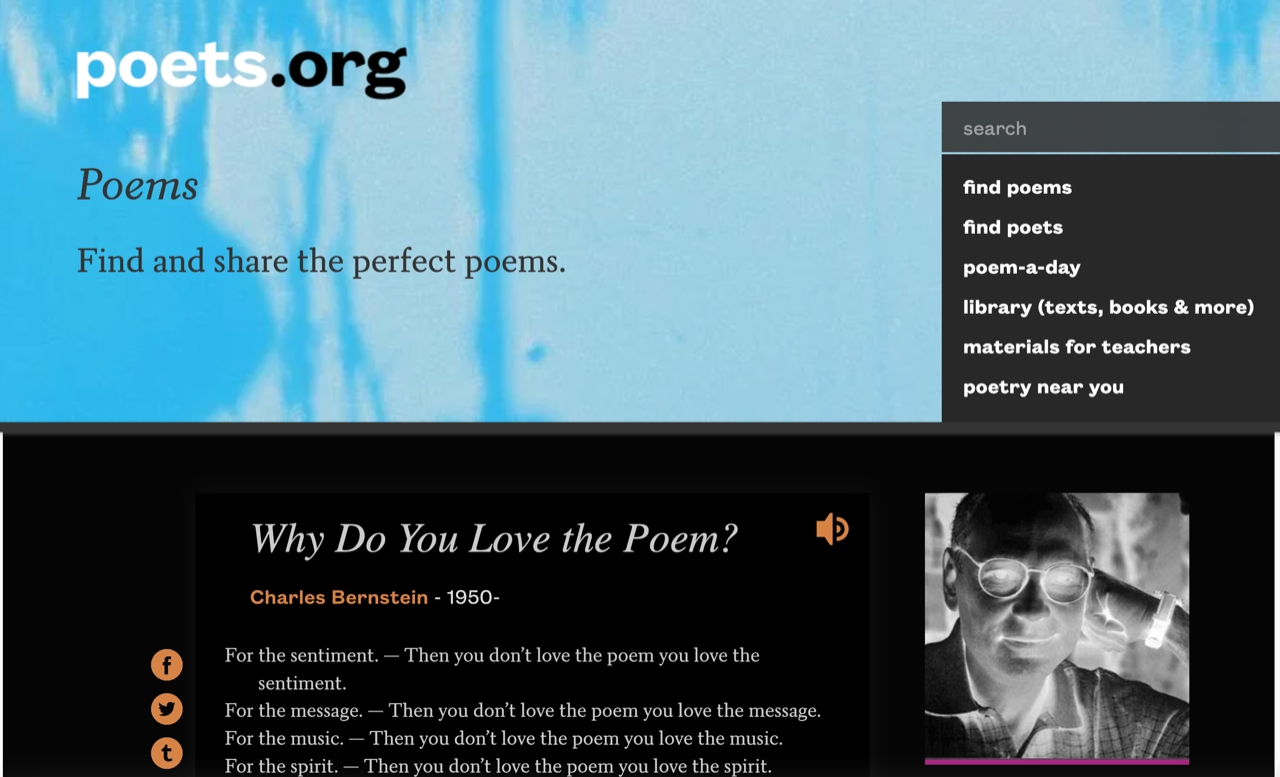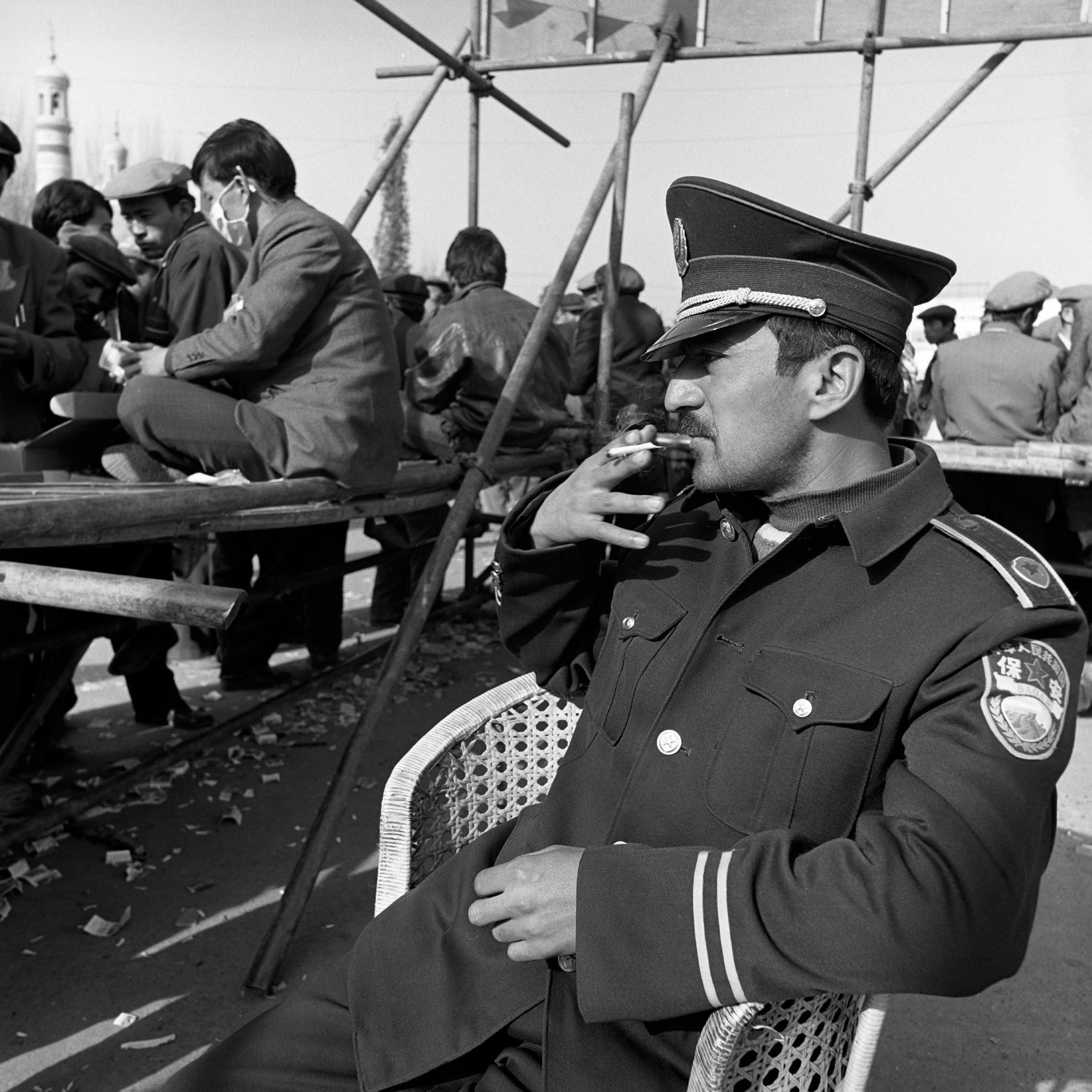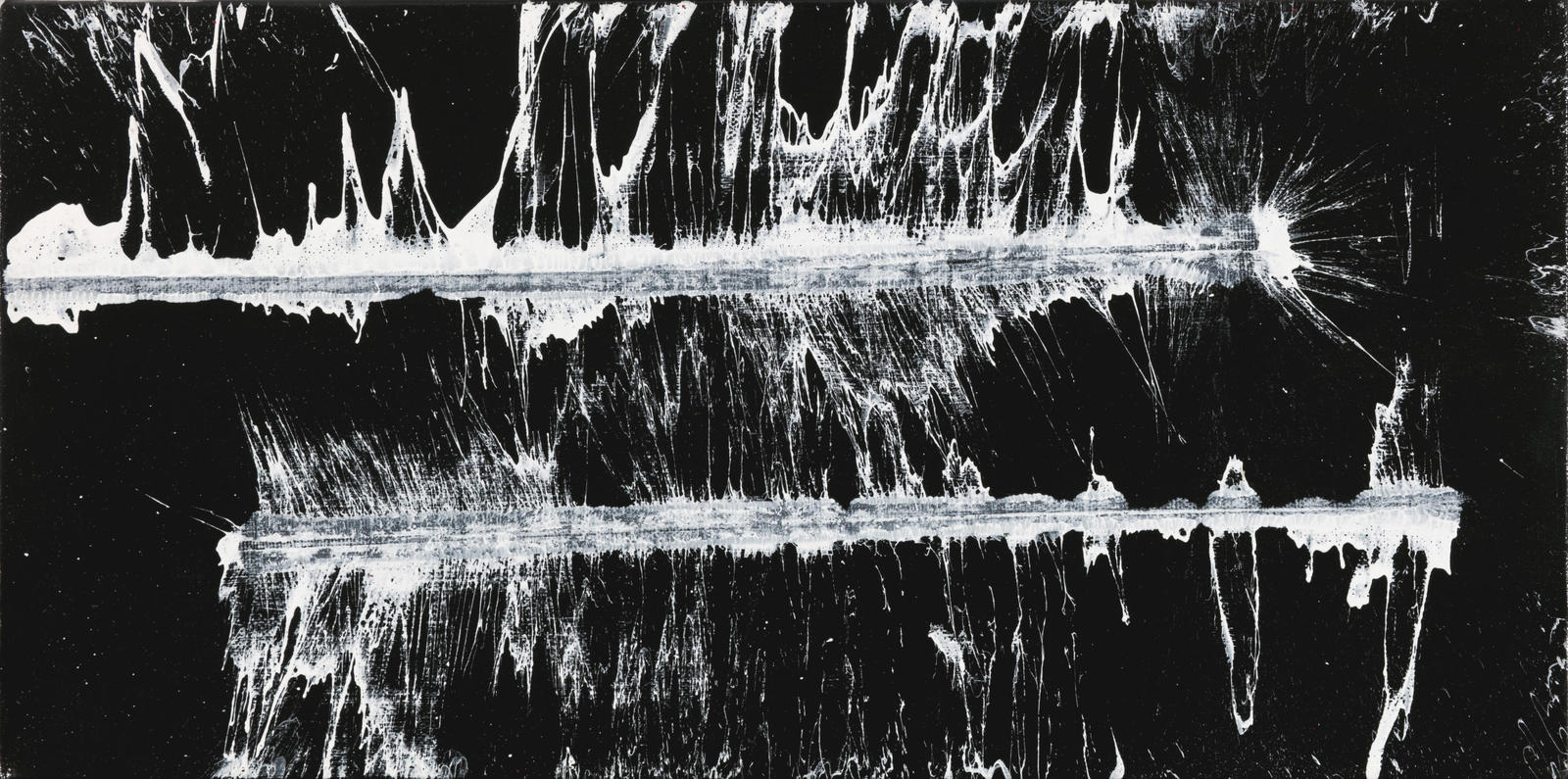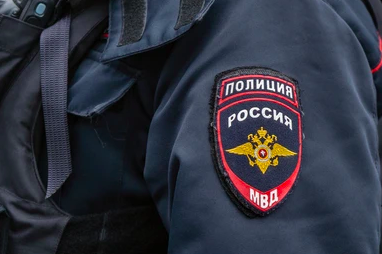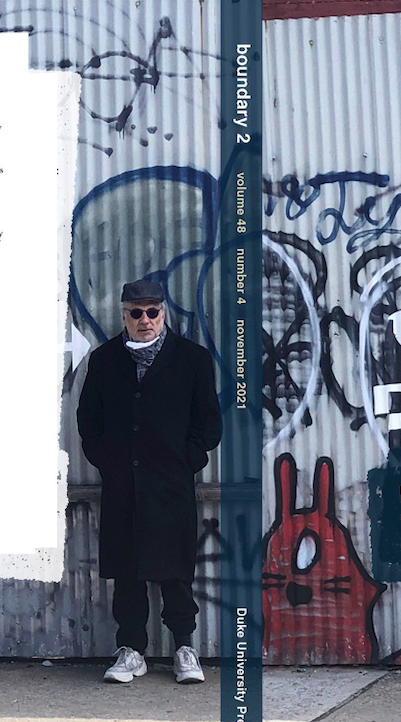This article was published as part of the b2o review‘s “Finance and Fiction” dossier. The dossier includes a response to this article by Alex Gourevitch.
Immediately following the finale of the third season of HBO’s Succession—the recent prestige drama about a Murdoch-like media mogul and the struggle among his children over who will succeed him as CEO—screengrabs of a now-famous scene began circulating on social media. The still depicts Jeremy Strong’s emotionally battered Kendall Roy sitting on the ground outside the Italian wedding venue where his mother has just been remarried, his brother Roman (played by a very game Kieran Culkin) bending at the waist to grip his shoulders and his sister Siobhan (or “Shiv,” a role owned by Sarah Snook) lightly touching his head while looking on with evident feeling and concern. To highlight the artistry and painterly composition of the scene, someone had superimposed on the shot of the three Roy siblings a geometric representation of the golden ratio, a spiral within a rectangle. Employed most famously by Italian artist and inventor Leonardo da Vinci, the golden ratio can often be found in paintings from the Renaissance period and was integral to the development of the humanist idea of the harmony, balance, and innate value of the human form. While the Italian setting of the season and portrait-like character of the shot would seem to suggest that this is more than mere coincidence, it is hard to understand what sort of role such an anachronistic gesture could be playing in a series as cruel and as brutally anti-humanist as this one, in which profitability, efficiency and power are “the measure of all things”—rather than humanity, to cite the Renaissance favorite Protagoras. At best, it appears to be a smug, ironic nod to the inhumanity of the Roys; at worst, a case of prestige television freely appropriating from an illustrious phase of art history in order to increase said prestige.
Yet Succession has consistently centered the human figure—especially, with its snap zooms, the human face—and such cinematographic devices serve to remind us of what very little else in the series’ dialogue or its characters’ acts is able to: their own diminished humanity and value. Understood in this way, the series isn’t engaged in the passé postmodern project of exposing the fraudulence of humanism; its subversiveness rather lies in the way it teaches us to see the humanity in—and thus to love—the rich.
The series begins with Kendall, the eldest of the three full siblings, preparing to replace his elderly father Logan Roy (Brian Cox) as the CEO of their family company, Waystar Royco, a media and entertainment conglomerate that passingly resembles the Murdoch empire. Yet as the heir apparent is initiated into his role, is widely discussed in the media, and makes the cover of Forbes, Logan begins to suspect that Kendall lacks the “killer instinct,” as Shiv puts it later, that the job requires. A recovering addict with a depressive streak who craves his domineering father’s respect and approval, Kendall fails several implicit tests, like a trick invitation to Logan’s eightieth birthday in the middle of tense acquisition negotiations. Logan’s fateful—yet perhaps prudent—decision to cancel his retirement plans and not step aside is the series’ equivalent to the Big Bang: it births the twisted, post-Shakespearian universe of Succession, in which Kendall, Shiv, and Roman compete against one another for the chief role and thus for their father’s affections.
By the midpoint of the third season, some of the series’ former champions began to question the point of the endless machinations and to voice concerns about the kinds of sympathies Succession seems made to elicit from its viewers. Why, such commentators wondered, should we feel sorry that the Roys might lose their private jets? Why are their lives given such sumptuous, wide-screen treatment, and not the lives of those their actions destroy? In season one, Roman dangles a million-dollar check before the son of two immigrant staff members, a sum they are promised if the child can hit a homerun in the family’s annual softball game. He of course is outed, his family made to sign an NDA, and they make a brief final appearance just before the credits roll, when it is intimated that, in exchange for their silence, they were given the Patek Philippe watch Logan indifferently received from Shiv’s husband Tom (Matthew Macfadyen) for his birthday. If the actual victims are bit players, silenced and marginalized, then our empathy for Kendall or Roman would appear to reflect our ensnarement in a classical ideological trap: the sentimental identification with a character’s “universal” plight, such as a son’s failure to live up to his father’s expectations.
In his influential critique of Western theater, Brecht famously decries works that elicit this kind of empathic projection as bourgeois instruments for blocking reflection and anesthetizing thought.[i] Yet the problem is not just that the true victims are elided or relegated to the sidelines; refocusing the narrative on a different struggle would simply reproduce the same difficulty. Rather, what goes missing is “the idea of a man as a function of the environment and the environment as a function of man” (1992: 97). What is elided, in other words, is a sense of the historical specificity of the dramatic action, the social situation that prompts those acts or that struggle at this time. To cite Richard Wright, the point is not to create art “which even bankers’ daughters could read [or watch] and weep over and feel good about”[ii]; the point for Brecht is to create opportunities for understanding the broader systemic reasons that things are as they are. But doesn’t this precisely tell against the mission of Succession, to teach us to “love the rich”?
At least at first glance, the view of Succession as a show for “bankers’ daughters” is reinforced by the most prominent “critical theory” of the social function of television and by the way that the series is shaped in accordance with the constraints specific to the medium. In the early fifties, Theodor Adorno produced a series of articles on the status of television “as ideology,” based on studies he undertook as the research director of the Hacker Foundation in California.[iii] There is a certain ham-fistedness and predictability to Adorno’s analyses, which largely consist of readings of individual “plays” (“shows,” in our contemporary idiom) as stereotypical representations of everyday life meant to foster conformity. Yet Adorno does begin to sketch a critical theory specific to the medium in elaborating the notion of “pseudo-realism,” which pinpoints the way television substitutes a “pedantically maintained realism in all matters of direct sense perception” for representation of the objective, institutional tendencies responsible for producing our shared reality (1991: 170). This endows television with a unique capacity for smuggling in an ideology of “the normal” advantageous to the capitalist status quo. Adorno cites as a key example the way the medium “personalizes” irreducibly historical and political phenomena. For instance, in a series about a fascist dictator, totalitarianism is represented as the result of the “character defects of ambitious politicians,” the dictator’s fall as a product of the warm personalities of courageous resisters (2005a: 63). This reinforces our sense of society as an aggregate of egos, atoms swirling in a history-less void.
In the case of Succession, however, this procedure is inverted: the character defects of the rich are like wounds that pique the interest of the morbidly curious and compel them to ask: “how did it happen?” It is precisely by foregoing the prestige sociology of a show like The Wire and by exactingly observing the inner lives and family dynamics of so “undeserving” a subject that the lineaments of distinct historical types (the mogul, the operative, the CEO) are thrown into relief. As a brief, pivotal scene in season one’s emotionally harrowing “Austerlitz” shows, Logan himself is a product of abuse. Shortly after Kendall questions an allusion his father makes to the beatings he endured as a child in Quebec, the camera lingers on Logan’s scarred back during his morning swim in an infinity pool. Yet it would be a mistake to read this scene as aiming to simply elicit the kind of “empathic projection” targeted by Brecht. A hallmark of Succession is its use of handheld cameras to achieve a verité effect, which creator Jesse Armstrong first deployed in his dark comedic masterpiece Peep Show. The series’ verité style is a way of exploiting the “pseudo-realism” of television to bring what is fantastical, sky-scraper high, back down to earth and to shock us with the disclosure that, to cite Marx, “The capitalist is just as enslaved by the relationships of capitalism as is his opposite pole, the worker” (1976: 990). Logan may not live among us, but he does live as one of us, as deformed by the demands of a market society as anyone else. And as we will see, Succession teaches us to love the rich precisely by illuminating the late capitalist web in which we all are caught.
For Marx, the purpose of capitalist production is the accumulation of value, which is measured in labor time. The drive to accumulation is a matter not of individual greed or miserliness but of a social system that necessitates that one sell one’s labor or buy and employ the labor of others to survive. Succession thus rightly depicts our world as a world of masters and slaves: Shiv is to Logan what Tom is to Shiv; what Tom is to Shiv Greg (Nicholas Braun) is to Tom. And to incentivize his own “slave” to aid him in betraying his master, Shiv, Tom promises Greg “your own Greg.” What Greg’s presence is meant to reveal is that it is in fact Gregs all the way down. Yet it is also Gregs all the way up. It might seem that that degree of wealth (tens of billions) would free anyone so lucky from the “drive to accumulation.” Logan’s scars help dispel the illusion that, in a family tree splintered into various master-slave relations, he is the “master of the house” standing unfettered at the top. In a reflection on the way marriage under capitalism serves less as a partnership founded on romantic love than as “a community of interests,” Adorno notes that one might think that “marriage without ignominy” is still possible for the rich, those who are “spared the pursuit of interests.” But the privileged, he writes, “are precisely those in whom the pursuit of interests has become second nature—they would not otherwise uphold privilege” (2005b: 31). This is not only apparent from the several weddings (and divorces) depicted in Succession but also from Logan’s neurotic obsession with dynasty, which is less a matter of perpetuating his own line than a matter of perpetuating the line of monopoly capital itself, of which Logan is a mere “character-mask” or representative.
What Succession dramatizes is the way inter-capitalist competition engenders an intra-capitalist struggle: the struggle within the monopoly itself to ensure its own continuity and the maintenance of its dominance, both within and without. In “Authority and the Family,” Max Horkheimer argues that, “in the golden age of the bourgeois order,” the family functioned as a refuge from the growing antagonisms of a market society and as the lone space in which individuals could still be recognized as autonomous ends. Yet as Horkheimer explains, the family also functioned as an incubator for compliant subjects, obedient to the state and passive in the face of the market just as they were trained to be before the patriarch (1972: 114). In Logan, the distinction between the authority of the patriarch and that of the market collapses. Just as he is subject to market forces beyond his control, which compel him in the end to sell Waystar to the Swedish interloper Lukas Matsson (Alexander Skarsgård), so does he subject his wife and children to the principle of exchange, paying for the loyalty of his wives with Waystar shares and forcing the three siblings to compete against each other not just for his affections but for the position of CEO. Yet because Logan is himself the monopolist, his children become his own competitors. He exploits his own paternal authority to exert his dominance while still expecting one of them to succeed him. Not only is the family enclave irredeemably contaminated by market rationality; it can no longer fulfill its own mission of instilling the (limited) sense of autonomy Kendall and his siblings would require to effectively lead.
Every master is thus also a slave, and every slave is a would-be master. The “lean-in” feminist ideology that Shiv would mock and disdain and yet that she also lives and breathes renders her a slave to her own drive to maximal empowerment and “independence.” In her (successful) attempt to gaslight Tom into agreeing to a non-monogamous marriage, Shiv reasons that “we’ve torn everything else down […] Love is the last fridge magnet left.” Her wish is fulfilled when, in the season-three finale, her husband finally does as she asks and betrays their marriage to further his own career. Inversely, when Roman “accidentally” sends the dick pic he intended for Gerri (J. Cameron Smith) to Logan’s phone, it could be argued that Roman’s aim has never been truer: on the cusp of success and relative independence, he brings about the ideal scenario for expressing his masochistic tendencies, re-infantilizing himself in Logan’s eyes to ensure his own continued obedience to his true dom, “daddy.” It is the ultimate instance of topping from the bottom. Yet the series itself preempts facile psychoanalytic readings by way of Shiv and Roman’s meta-commentary on the Roy family “family romance.” In a bizarre, truly inspired stretch of dialogue in “Too Much Birthday” in season three, Roman makes so absurdly explicit his psychosexual motivations for competing with Shiv as to render them entirely worthless from the standpoint of the critic: “Turns out he loves it when I do the daddy dance […] He loves fucking me, and he just doesn’t want to fuck you anymore.” In the case of Succession, Oedipal and Electra complexes are not the keys to understanding but the very phenomena to be understood.
When Succession first premiered, it received a somewhat lukewarm reception because it seemed uncertain about its own generic identity and suffered from tonal problems. But this is by design. In the comedic Succession, our laughter registers our surprise at the ignobility of the nobles. That subversion of expectation is what makes us laugh, but it is also the source of the series’ tragedy—namely that the “good life” after which we all are striving is in actuality the bad one. It is a tragicomedy because the most refined and elite among us are deeply, pathologically, unrefined and broken. According to Henri Bergson, comedy consists in the incursion of the mechanical and autonomic into the realm of the living[iv]; hence the displacement of pseudo-realism in Succession by a Courbet-like realism of decay. In the opening episode of season two, a foul odor pervades the family’s summer home in the Hamptons, spoiling a lavish lunch spread; a later shot establishes a raccoon carcass as the culprit, which a rankled contractor stuffed in the chimney in retaliation for lack of payment. Later, in season three, Tom and Shiv try wine from their private vineyard, only to discover that it tastes of literal shit (Tom, euphemizing, notes its “earthy,” “agricultural,” bouquet). And finally, in accord with Kantorowitz’ famous notion of the “king’s two bodies” (2016), the public, invulnerable one (the monarch) and the private, material one (the man), Logan’s public persona lives parasitically on his ailing body, which suffers a stroke, succumbs to “piss madness” from a UTI, and is jeopardized by a near-heart attack following a walk with his estranged son Kendall and a concerned investor (2016). The clean, corporate spaces are regularly befouled by the Roys, as when Logan urinates on Kendall’s carpet and Roman ejaculates on the office window, suggesting that the “good life” is itself rotten, “bad,” with decadence often coinciding with literal decay.
Yet as the scene with which we began intimates, it is because the Roys themselves are capital’s slaves that they are worthy of our attention—worthy of our love. When Kendall confesses to his siblings that he was responsible for the death of the waiter at the end of the first season, it is, surprisingly, the darkly impish Roman who listens most attentively. Kendall is motivated to confess because he wants to be confirmed in his understanding of himself as a murderer, a reckless elite, but Roman contests this self-conception and tries to highlight the good intentions evident in Kendall’s acts—that he tried to save the waiter, that he acted as a hero. Kendall’s struggle to be known results in a shift in his own self-knowledge. In treating Kendall as a moral agent, Roman enables him, for the first time in the series, to actually be one rather than just play one. The scene inverts a moment from the season’s second episode, when Kendall had sought to sway his siblings to join his moral crusade against Logan’s stewardship of the company. Whereas Kendall’s self-deceived, self-aggrandizing proposal then proved less than palatable, here his vulnerable disclosure of his role in the death of the waiter at the end of season one amounts to an authentic appeal for community that only Shiv and Roman could satisfy. It is because Kendall has finally and truly given up on being Logan’s son that he is able to become a brother. A further result of Roman’s struggle in the prior scene to know his brother is that, in acknowledging what Roman knows, Kendall enables Roman to learn something about himself, namely that he can be trusted and is capable of love. Roman’s masochistic kink may be an attempt to master his feelings of inadequacy behind closed doors, but his severe allergy to any form of intimacy—especially with his romantic partners—reflects both his fear of being known and his fear of being the knower, one who must trust and one who must be trusted. In recognizing Roman’s capacity as a recognizer, Kendall thus enables his brother to be the sort of person who loves, as we will shortly see.
But the Utopian dream of their mutual coordination of the company, the flushing out of the fascists at the Fox News-like ATN, and the democracy-minded righting of the corporate ship, is short-lived. As we discover, Tom has betrayed Shiv to Logan on account of her multi-layered betrayal of Tom, enabling Logan to call the bluff of the Roy children and to block their veto of the Waystar sale. When an enraged Logan exclaims that their guns have “turned into sausages” and asks what leverage they have left, Roman repeats Kendall’s confessional gesture and, inelegantly but effectively, asks: “I don’t know—fucking love?” But this appeal for community falls on deaf ears; the struggle for recognition and mutual understanding in which Roman is now trying to engage is misread by Logan as “the Game” the family has been playing since the very first episode. Logan cannot bear the demand that is being made of him, the demand that he act out of love for his children, and so does not just refuse to reciprocate Roman’s gesture but casts doubt on the authenticity of what he has just expressed. This ultimate skeptical act, Logan’s insinuation that Roman is speaking in bad faith, is what undermines the recognitive edifice the siblings had begun to build, by undermining Roman’s new and fragile sense of self. The tragedy of the scene lies in the way that Roman loses his father by finally attempting to genuinely be his son and in the way Logan’s attempt to outmaneuver doom is what—it seems—will ultimately doom him. Logan is constitutionally unable to make the one non-strategic choice that might well destroy the company (and thus himself) but help make his children (and thus himself) a different, non-pecuniary kind of “whole.” As the episode and season draw to a close, the shot with which we began is inverted: Kendall and Shiv now stand over a devastated Roman. It is difficult to watch—all the more so because there is no sense of schadenfreude, no sense of a “rich asshole” getting what he deserves. What the use of such a “humanistic” frame is meant to teach us in such anxiety-provoking scenes, what we are meant to learn from this acknowledgement of us, the viewers, is precisely “how to love the rich.”
But surely, one might object, we also do have good reasons for hating the rich. While they may be dominated by the law of value, they are, after all, the beneficiaries of that law. Yet just as Adorno observes that “one must have tradition in oneself to hate it properly” (2005b: 52), so must one first learn to love the rich. It is only in recognizing the source of our shared domination that we come to understand the structural necessity of the domination of one class by another—and thus the “badness” of the rich. Over the course of Succession’s four seasons, it becomes increasingly clear that Logan’s children precisely aren’t “killers,” are too mutilated to do what needs to be done: to “succeed” Logan by moving on from Waystar and building something of their own or by toppling their father and running the business themselves. At the same time, it is also exactly what they are formed to do. In the final scene between the siblings in the fourth season, when Shiv chooses not to back Kendall as CEO but to back her estranged husband Tom, Kendall pleads with his sister not to betray him and delivers perhaps the most haunting line of the entire series: “I am like a cog built to fit only one machine. It’s the one thing I know how to do.” The metaphor captures the subsumption of acculturation, Bildung, growing up, under the drive to accumulation. Hence Kendall’s virtuosic—if morally repugnant—attempt to sell what in effect is a glorified retirement facility as a life-extending utopia (“Living+”), just to boost the Waystar valuation. Or Roman’s installation of the fascism-adjacent Mencken as president, just to insure his continued control of the family business. But the tragedy is that, while Kendall is built for this machine only, he is just thereby misshapen, deformed, unable to competently do the job. Time and again his desire to succeed his father as CEO has led him to jeopardize the very company he is supposed to lead. Meanwhile, Shiv blocks Kendall not only because she has negotiated a better deal for herself and because she’ll have a modicum of influence with Tom as CEO. Rather, Shiv cannot but block Kendall, because of the principle of competition Logan has instilled in his children. Shiv may be reasoning strategically, choosing self-interest over fraternal love, but the principle of self-interest has itself become an end in its own right or “highest good”—what Kant once identified as “radical evil” itself.
The ethical culpability and “badness” of the Roys—the principle of their unlovability—are what lend several of the most moving scenes in the series finale their pathos. When, for example, Shiv and Roman finally relent to Kendall’s desire to be CEO and crown him as “king” in their mother’s kitchen, the scene reads as a kind of “pre-oedipal fantasy.” There is a nostalgia in the scene for a reciprocity, fraternity, and satisfaction the siblings actually never knew—as the cold hearth (or empty refrigerator) of their mother’s home intimates. It isn’t a depiction of the “real” siblings, of their real feelings of love outside the corporate drama; it is the fantasy of a world without or prior to Logan—a world in which Kendall, Roman, and Shiv would not be who they are. This is also why, as the siblings watch a home movie of Logan having dinner with their half-brother Connor (Alan Ruck), the television acts as a “window” onto a reality they can never inhabit. Logan, for them, can only play “father” on TV, or as in Kendall’s “Living+” presentation, as a digitized ghost that finally gives Kendall the approval he has craved—but only because Kendall has paid a technician to manipulate his father’s words. We love the Roys, in a sense, because we are gripped by the tragedy of their inability to love one another. By the same token, it is only by learning to love the Roys that we “can hate them properly,” through a critique of the monopoly form of capital that necessitates the dynastic succession (and thus the existence of the Roys). Nowhere is the iniquity of the rich (and of their indomitable master) more on display than in the series’ final moments. As Lacan famously observed, the true father is the dead one because it is only as dead that the father is “internalized” and thereby able to fully realize his psychological function.[v] The end of Succession bears this out: Shiv has never been more her father’s daughter than when—in an act as loathsome as it is necessary—she destroys Logan’s son.
In its earlier seasons, in addition to objecting to the series’ overly sympathetic treatment of the rich, critics of Succession often complained that the show had run out of ideas and had nowhere left to go. While this proved untrue in the end, the series’ critics also weren’t exactly wrong. By way of conclusion, it’s worth noting the meta-televisual dimension of the series as reflected in its title, which designates the medium’s principle of motion: seriality or successiveness. In a lesser-known companion essay (“The Fact of Television”) to his justly famous, discipline-founding work on film, The World Viewed, Stanley Cavell attempts the deduction of this defining principle of the medium, alongside the principle that television is meant for “monitoring” rather than “viewing” (as in film). According to Cavell,
Serial procedure can be thought of as the establishing of a stable condition punctuated by repeated crises or events that are not developments of the situation requiring a single resolution, but intrusions or emergencies—or humor, or adventure, or talent, or misery—each of which runs a natural course and thereupon rejoins the realm of the uneventful; which is perhaps to say, serial procedure is undialectical. (1982: 89)
In watching television, we “monitor” the normal and the uneventful, the “way of the world,” which the serial format itself embodies. This is why, Cavell remarks, people often leave their TVs on in the background, not unlike the monitors utilized by security companies. What Cavell calls the “fear of television”—still encapsulated today in the common refrain that “I don’t even own a TV”—lies in the way it makes “intuitive the failure of [the world’s] survival of me,” in the way it seems to monitor the “growing uninhabitability of the world, the irreversible pollution of the earth” (1982: 95). If television captures the way the world stands outside me and is in some sense independent of me, what we fear is that the world it is monitoring is a world that will not survive us: the medium has itself become the fearful suggestion of the end of the company we keep. In the age of new media, Cavell’s analysis might seem quaint. But what is “doom scrolling” if not a fearful anticipation of “the failure of [the world’s] survival of me”?
Succession may have once appeared to be merely spinning its wheels, going nowhere, but it was arguably in just this respect that it fulfilled its medium’s mandate. What the series so grippingly “monitored” was the treadmill of capital itself, the way it spins its wheels, is going nowhere. Succession thereby relayed the submerged tragedy of this uneventful repetition. Yet it is also because it asked of us that we learn to love the Roys that we might begin to see that—despite what they themselves would have us believe—the realm of freedom is not a private enclave in the Hamptons, reachable only by helicopter.
References
Adorno, Theodor. 2005a. Critical Models: Interventions and Catchwords. Translated by Henry Pickford. New York: Columbia University Press.
Adorno, Theodor. 1991. The Culture Industry: Selected Essays on Mass Culture. Edited by J.M. Bernstein. New York: Routledge.
Adorno, Theodor. 2005b. Minima Moralia: Reflections on Damaged Life. Translated by E.F.N. Jephcott. New York: Verso.
Armstrong, Jesse, et al. 2018-2023. Succession. HBO Entertainment, Gary Sanchez Productions, Hyperobject Industries, Project Zeus.
Brecht, Bertolt. 1992. Brecht on Theater: The Development of an Aesthetic. Edited and translated by John Willet. New York: Hill and Wang.
Cavell, Stanley. 1979. The Claim of Reason: Wittgenstein, Skepticism, Morality, and Tragedy. Oxford: Oxford University Press.
Cavell, Stanley. 1982. The Fact of Television. Daedelus 111, no. 4: 75-96.
Horkheimer, Max. 1972. Critical Theory: Selected Essays. Translated by Matthew J. O’Connell et al. New York: Continuum.
Kantorowicz, Ernst. 2016. The King’s Two Bodies: A Study in Medieval Political Theology. Princeton: Princeton University Press.
Lacan, Jacques. 1992. The Seminar of Jacques Lacan: Book VII: The Ethics of Psychoanalysis 1959-1960. Translated by Dennis Porter. New York: W.W. Norton.
Marx, Karl. 1976. Capital: A Critique of Political Economy (Vol. I). Translated by Ben Fowkes. New York: Penguin Books.
Warren, Kenneth. 2016. “Rankine’s Elite Status.” Los Angeles Review of Books, January. https://lareviewofbooks.org/article/reconsidering-claudia-rankines-citizen-an-american- lyric-a-symposium-part-ii/
Jensen Suther is a former Fulbright Scholar and received his PhD from Yale University. He is currently a Junior Fellow in the Harvard Society of Fellows. His writing has appeared or is forthcoming in a range of academic and public-facing venues, including Modernism/modernity, Representations, the Los Angeles Review of Books, and the New Statesman. He is currently working on two books—Spirit Disfigured and Hegel’s Bio-Aesthetics—which explore Hegel’s legacy for Marxism in aesthetic, political, and philosophical contexts.
[i] See the well-known “Alienation Effects in Chinese Acting” in Brecht (1992).
[ii] Quoted in Warren (2016).
[iii] See “Prologue to Television” and “Television as Ideology” in Adorno (2005a).
[iv] As noted in Cavell 1979, 415.
[v] See, for instance, Lacan 1992, 309.
